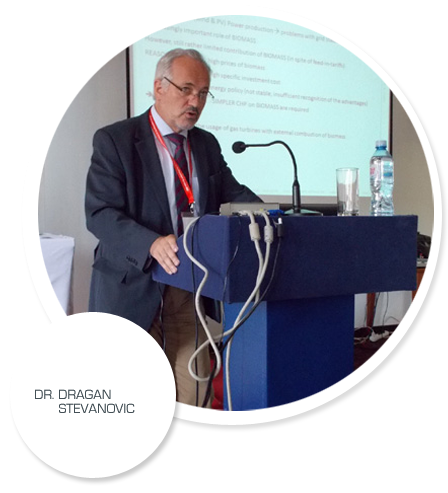IEEP 2013
Dr. Dragan STEVANOVIC
Engineering & Consulting, Sulzbach-Rosenberg, Germany
INTRODUCTION
The very fast increase of renewable power in some countries, mainly based on wind and photovoltaic, causes problems for the stability of the power grids already.
It is not easy to preserve the equilibrium between power production and power consumption anymore, due to the stochastic nature of wind and insolation availability.
Therefore, the role of biomass for the production of power and heat becomes increasingly important.
Contrary to wind and solar energy, it enables a more constant supply, e.g. of power and heat from CHP plants.
In spite of very favourable feed-in tariffs in many countries, its contribution is still rather limited.
The reasons lie in the high prices for biomass, as well as in the high specific investment costs.
This means: developments of more efficient and simpler CHP are required. In this paper, some new developments in the usage of gas turbines with external
combustion for biomass processes will be presented. Further on, the advantages of new developments towards the state-of-the-art processes will be discussed as well.
This paper relates to the usage of solid biomass, with a water content up to 60%.
TRADITIONAL STATE-OF-THE-ART
The first biomass CHP facilities
were based on steam boilers a
nd steam turbines, i.e. on the
Clausius-Rankine cycle. Those facilities sti
ll produce most of the biomass power. However,
they are not specially developed for biomass a
pplications, but scaled down from big power
plants for applications with fossil fuels. Ther
efore, they are not very efficient, because a
compromise between complexity and efficiency
is unavoidable. Those
plants usually have a
power capacity under 10 MWe and therefore not
a single regenerative
heat exchanger, nor
steam reheating. Steam parameters are usually
not higher than 60bar and 400°C. Therefore,
the highest electrical efficiency in condens
ing mode does not overc
ome 25%. In extraction
mode, those values are considerably lower,
depending on the amount of extracted steam.
READ MORE >>

